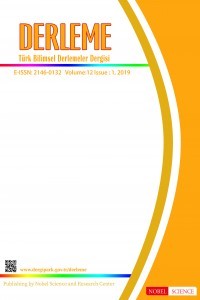Cultural Entomology
Cultural Entomology
Insect, Human, Cultural Entomology,
- Başlangıç: 2008
- Yayıncı: Nobel Bilim ve Araştırma Merkezi Limited
Mersin İli Tarsus İlçesi Üzüm Üretiminin Mevcut Durumu ve Sorunları
Bahar ÖZDEMİR, Cuma AKBAY, Havva ÇALIŞKAN
Yem Bitkileri Kaynaklı Zehirli Maddeler Ve Çözüm Önerileri
Ayla TÜZÜN, Büşra KALEMCİ, Havva Gül MURAT
Türkiye’de Gökkuşağı Alabalığı Yetiştiriciliğinin Mevcut Durumu
Mustafa Erkan ÖZGÜR, İsmail BAYIR, Selahattin GÜRÇAY
Karadeniz Bölgesi’nde Bahçe Bitkilerinin Mevcut Durumu ve Potansiyeli
Mustafa AKBULUT, Arzu KARATAŞ, Keziban YAZICI, Nalan BAKOĞLU, Damla Turan BÜYÜKDİNÇ, Burcu GÖKSU
Mersin İli Gülnar İlçesi Elma Üreticilerinin Mevcut Durumu ve Sorunlar
Bahar ÖZDEMİR, Cuma AKBAY, Asiye ÇELİK
Av Turizminin Kırsal Turizm Açısından Kırsal Kalkınma Üzerindeki Etkisinin İrdelenmesi
Sakarya İli’nde Dış Mekan Süs Bitkileri Yetiştiriciliği Potansiyeli, Problemleri ve Çözüm Önerileri
Ömer BEYHAN, Taki DEMİR, Mustafa YILMAZ, Ali GÜREL
